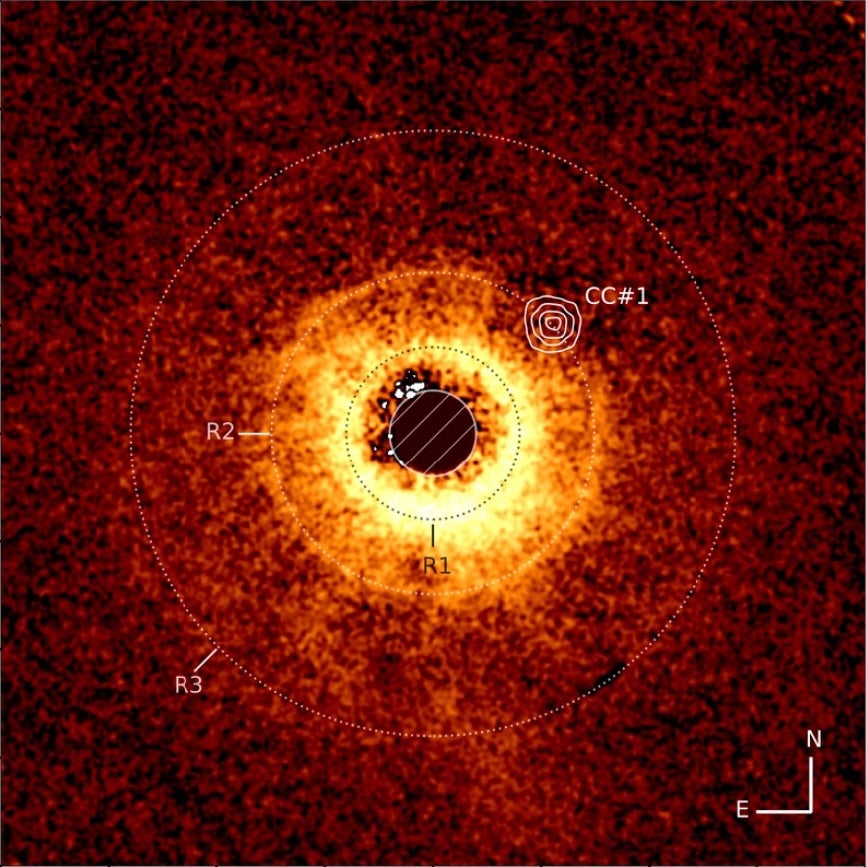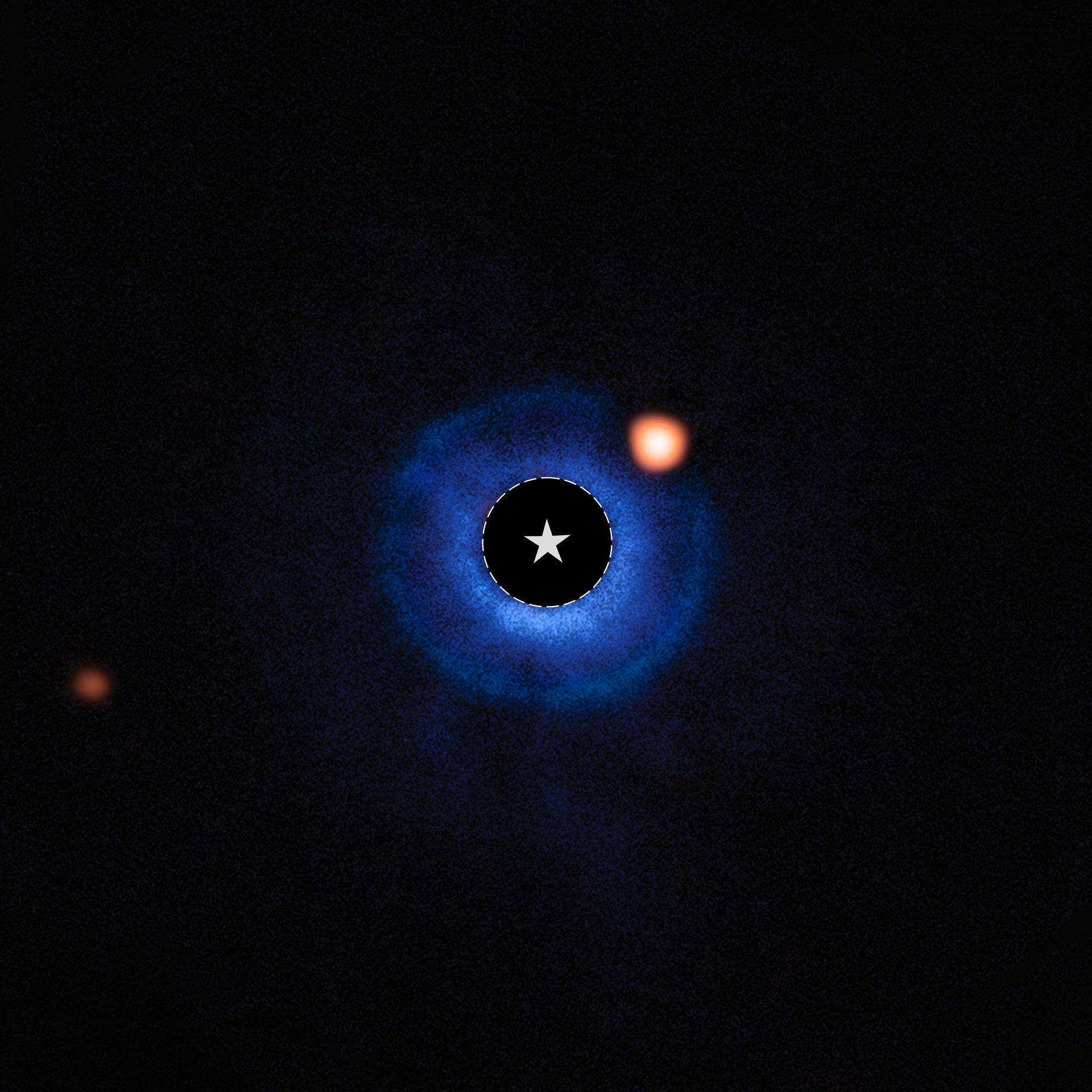NASA’s James Webb Space Telescope has captured an image of an exoplanet for the first time since it began science operations in July of 2022.
The previously unknown celestial body has been named “TWA 7 b.” It is located some 110 light-years away from Earth around the constellation Antlia and orbits the young nearby star TWA 7.
“After eliminating the possibility of a potential observation bias, the scientists concluded that it was most probably an exoplanet,” the French National Centre for Scientific Research (CNRS) said in a statement.
The image was taken using a coronagraph on the telescope’s Mid-Infrared Instrument, which is also known as “MIRI.” Coronagraphs are used to block out the light of stars such as the sun in order to observe fainter nearby objects.
The findings, spearheaded by a researcher at the center, were published on Wednesday in the journal Nature. The center developed the coronagraph, alongside the French Alternative Energies and Atomic Energy Commission.

Looking within a disk of rocky debris and dust around the star, scientists have previously identified concentric ring-like structures within them. Until now, astronomers had suspected the structures resulted from gravitational interaction between the building blocks of planets and unidentified planets. TWA 7, which was one of two systems they looked at, has three rings.
“One of the two systems, named TWA 7, has three distinct rings, one of which is especially narrow, and surrounded by two empty areas with almost no matter,” the center said.
The image Webb took revealed the potential source.
“Detailed simulations have indeed confirmed the formation of a thin ring and a ‘hole’ at the exact planet’s position, which perfectly corresponds to the observations made with the JWST,” the center noted.
With a mass comparable to Saturn, TWA 7 b is easier to detect in the mid-infrared thermal range because it is some 10 times lighter than those previously snapped in images. The recently formed planets in these systems are also still hot, making them brighter than their older counterparts.

There are currently more than 5,900 confirmed exoplanets that exist beyond our solar system. Most of them orbit other stars and the majority of those that have been discovered are in our Milky Way galaxy. But, NASA believes that billions exist.
Exoplanets help to better understand how planetary systems form including our own. However, they are often drowned out by starlight. Scientists hope to capture images of planets with even less mass in the future using Webb.
“This result marks a new step in the research and direct imaging of increasingly small exoplanets, which are more similar to the Earth than to the gas giants of the Solar System,” the center wrote.







